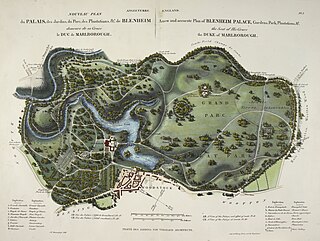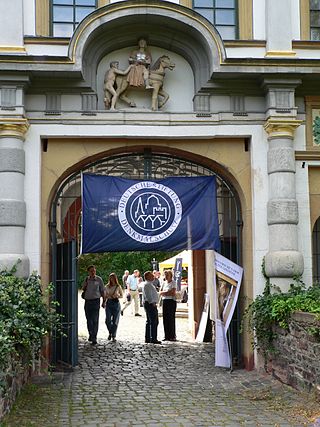Doors open days in Scotland
Doors Open Days is organised by the Scottish Civic Trust. Alongside Scottish Archaeology Month, [5] the open days form Scotland's contribution to European Heritage Days. This joint initiative between the Council of Europe and the European Union aims to give people a greater understanding of each other through sharing and exploring cultural heritage. 49 countries across Europe take part annually, in September.
During Glasgow's year as European City of Culture in 1990, organisers ran an Open Doors event, an event credited with popularizing the Doors Open concept and spreading it to other countries. [3] Its popularity encouraged other areas to take part the following year and were coordinated by the Scottish Civic Trust. Doors Open Days now take place throughout Scotland thanks to a team of area coordinators. These coordinators work for a mixture of organisations: local councils, civic trusts, heritage organisations and archaeological trusts.
Scotland is one of the few participating countries where events take place every weekend in September, with different areas choosing their own dates. More than 900 buildings now take part. In 2008, over 225,000 visits were made generating £2 million for the Scottish economy. It is estimated that 5,000 or more volunteers give their time to run activities and open doors for members of the public.
Doors Open Days was supported in 2009 by Homecoming Scotland 2009, [6] a year-long initiative that marked the 250th anniversary of the birth of Scotland's national poet, Robert Burns. It was funded by the Scottish Government and part financed by the European Union through the European Regional Development Fund. Its aim was to engage Scots at home, as well as motivate people of Scottish descent and those who simply love Scotland, to take part in an inspirational celebration of Scottish culture and heritage.

English Heritage is a charity that manages over 400 historic monuments, buildings and places. These include prehistoric sites, medieval castles, Roman forts, and country houses.

This page gives an overview of the complex structure of environmental and cultural conservation in the United Kingdom.

Cadw is the historic environment service of the Welsh Government and part of the Tourism and Culture group. Cadw works to protect the historic buildings and structures, the landscapes and heritage sites of Wales, to make them available for the public to visit, enjoy, and understand their significance. Cadw manages 127 state-owned properties and sites. It arranges events at its managed properties, provides lectures and teaching sessions, offers heritage walks, and hosts an online shop. Members of the public can become members of Cadw to gain membership privileges.

In the United Kingdom, a listed building is a structure of particular architectural and/or historic interest deserving of special protection. Such buildings are placed on one of the four statutory lists maintained by Historic England in England, Historic Environment Scotland in Scotland, Cadw in Wales, and the Northern Ireland Environment Agency in Northern Ireland. The classification schemes differ between England and Wales, Scotland, and Northern Ireland. The term has also been used in the Republic of Ireland, where buildings are protected under the Planning and Development Act 2000, although the statutory term in Ireland is "protected structure."

Victorian architecture is a series of architectural revival styles in the mid-to-late 19th century. Victorian refers to the reign of Queen Victoria (1837–1901), called the Victorian era, during which period the styles known as Victorian were used in construction. However, many elements of what is typically termed "Victorian" architecture did not become popular until later in Victoria's reign, roughly from 1850 and later. The styles often included interpretations and eclectic revivals of historic styles (see Historicism). The name represents the British and French custom of naming architectural styles for a reigning monarch. Within this naming and classification scheme, it followed Georgian architecture and later Regency architecture and was succeeded by Edwardian architecture.

Brookland, also known as Little Rome or Little Vatican, is a neighborhood located in the Northeast (NE) quadrant of Washington, D.C. It is best known for its numerous Catholic institutions, including schools, religious communities, shrines, institutes, and other organizations built and based around the Catholic University of America.

The Mills Corporation was a publicly traded real estate investment trust headquartered in Chevy Chase, Maryland, United States, acquired on April 3, 2007, by an investment group composed of Simon Property Group and Farallon Capital Management. The company developed, owned, and operated major super-regional shopping malls. The company built 18 "Landmark" centers in which the malls were named after "Mills", like "Vaughan Mills", or "St. Louis Mills"; and also over 20 "21st Century Retail" regional malls that they started operating in 2002, like Del Amo Fashion Center and Southdale Center. Most former Mills facilities have a large movie theater from 10 to 30 screens, and a large food court. Their facilities were normally built in colorful modern/abstract architectural designs, but in recent years have been renovated to more conventional designs with mainly neutral colors. Simon Property Group assumed management of the former Mills properties after the acquisition, and is operating the former "Landmark Mills" group as a separate operating segment within its organization.
Heritage Open Days is an annual celebration of England's history and culture that allows visitors free access to heritage sites and community events that are either not usually open to the public, would normally charge an entrance fee, or that are putting on something special for the festival. It also includes tours, events and activities related to history, nature and culture.
A county hall or shire hall is a common name given to a building that houses the seat of local government for a county.

Historic garden conservation is a specialised type of historic preservation and conservation or restoration concerned with historical and landmark gardens and designed landscapes.

European Heritage Days (EHD) is a joint action of the Council of Europe and the European Commission involving all 50 signatory states of the European Cultural Convention under the motto, Europe: a common heritage. The annual programme offers opportunities to visit buildings, monuments and sites, many of which are not normally accessible to the public. It aims to widen access and foster care for architectural and environmental heritage. These events are also known as Doors Open Days and Open Doors Days in English-speaking countries.

America's 11 Most Endangered Places or America's 11 Most Endangered Historic Places is a list of places in the United States that the National Trust for Historic Preservation considers the most endangered. It aims to inspire Americans to preserve examples of architectural and cultural heritage that could be "relegated to the dustbins of history" without intervention.
The Scottish Civic Trust is a registered charity. Founded in 1967, and based in the Category A-listed Tobacco Merchant's House in Glasgow, the Trust aims to provide "leadership and focus in the protection, enhancement and development of Scotland's built environment". It often comments on planning applications. From 1990 to 2011 the Trust maintained the Buildings at Risk Register for Scotland on behalf of Historic Environment Scotland and delivers the popular Doors Open Days programme in Scotland. The current director of the Trust is Susan O'Connor.

Leeds Civic Trust is a voluntary organisation and registered charity established in Leeds, West Yorkshire, England in 1965. Affiliated to the national charity Civic Voice, its stated purpose is "to stimulate public interest in and care for the beauty, history, and character of the city and locality, to encourage high standards of design, architecture and town planning; [and] to encourage the development and improvement of features of general public amenity".

Club Baths was a chain of gay bathhouses in the United States and Canada with particular prominence from the 1960s through the 1990s.
Lester Johnson was an American artist and educator. Johnson was a member of the Second Generation of the New York School during the late 1950s. The subject of much of his work is the human figure. His style is considered by critics and art historians to be in the figurative expressionist mode.

Baltimore Heritage is an American nonprofit historic-preservation organization headquartered in Baltimore, Maryland.
The Civic Trust for Wales was founded in 1964. It is a registered charity.

The Tag des offenen Denkmals is an annual event all over Germany. The day of action has been coordinated by the Deutsche Stiftung Denkmalschutz since 1993. Historic monuments are open to the public free of charge. It takes place on the second Sunday in September and attracts several million visitors each year. The largest cultural event in Germany is the contribution of the country to the European Heritage Days.













